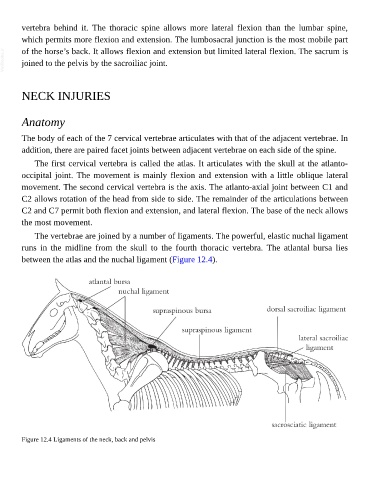Page 528 - The Veterinary Care of the Horse
P. 528
vertebra behind it. The thoracic spine allows more lateral flexion than the lumbar spine,
which permits more flexion and extension. The lumbosacral junction is the most mobile part
VetBooks.ir of the horse’s back. It allows flexion and extension but limited lateral flexion. The sacrum is
joined to the pelvis by the sacroiliac joint.
NECK INJURIES
Anatomy
The body of each of the 7 cervical vertebrae articulates with that of the adjacent vertebrae. In
addition, there are paired facet joints between adjacent vertebrae on each side of the spine.
The first cervical vertebra is called the atlas. It articulates with the skull at the atlanto-
occipital joint. The movement is mainly flexion and extension with a little oblique lateral
movement. The second cervical vertebra is the axis. The atlanto-axial joint between C1 and
C2 allows rotation of the head from side to side. The remainder of the articulations between
C2 and C7 permit both flexion and extension, and lateral flexion. The base of the neck allows
the most movement.
The vertebrae are joined by a number of ligaments. The powerful, elastic nuchal ligament
runs in the midline from the skull to the fourth thoracic vertebra. The atlantal bursa lies
between the atlas and the nuchal ligament (Figure 12.4).
Figure 12.4 Ligaments of the neck, back and pelvis

